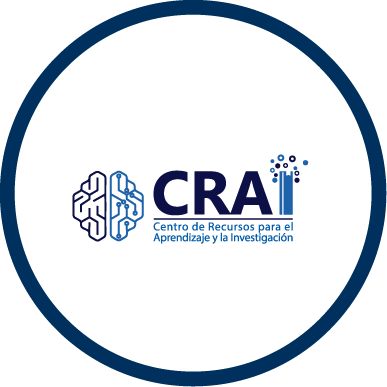Desarrollo de materiales modificadores de propiedades eléctricas de los elementos aislantes poliméricos vinílicos basados en tecnologías de Nanoescala.
The main objective of this research work was to evaluate the impact of the synthesized additives, through nanotechnology, in the electrical properties of the PVC to improve its insulator behavior in order to obtain a plastic coating that withstand long exposure times to unfavorable environments. Mod...
Guardado en:
| Autor principal: | |
|---|---|
| Otros Autores: | |
| Formato: | Tesis y disertaciones (Maestría y/o Doctorado) |
| Lenguaje: | spa |
| Publicado: |
Universidad Antonio Nariño
2022
|
| Materias: | |
| Acceso en línea: | http://repositorio.uan.edu.co/handle/123456789/6615 |
| Etiquetas: |
Agregar Etiqueta
Sin Etiquetas, Sea el primero en etiquetar este registro!
|
| _version_ | 1812647274710302720 |
|---|---|
| author | Tarazona Saldarriaga, Paola |
| author2 | Camargo, Manuel |
| author_facet | Camargo, Manuel Tarazona Saldarriaga, Paola |
| author_sort | Tarazona Saldarriaga, Paola |
| collection | DSpace |
| description | The main objective of this research work was to evaluate the impact of the synthesized additives, through nanotechnology, in the electrical properties of the PVC to improve its insulator behavior in order to obtain a plastic coating that withstand long exposure times to unfavorable environments. Modified nanoparticles were synthesized using surface engineering with silica, aluminum and magnesium-base compounds along with organic acids and evaluated in an insulating coating formula for electrical cables with an operating temperature of 105 °C. In the experimental research, the nanoadditive was added to the thermal stabilizer used in the manufacturing of PVC compound and the nanoadditive concentration was posed taking into account the economic and performance impact on the final product, seeking for an increase below 0.3 USD per kilogram in the thermal stabilizer cost. The compound was used to manufacture flat PVC plates used for the performance and accelerated aging tests. Properties like color, hardness and volume resistivity before and after water absorption were evaluated. Finally, there were 3 successful prototypes obtained along with its economical analysis and its impact on the stabilizer cost and a proposal for the implementation of the process at an industrial level in Carboquimica. |
| format | Tesis y disertaciones (Maestría y/o Doctorado) |
| id | repositorio.uan.edu.co-123456789-6615 |
| institution | Repositorio Digital UAN |
| language | spa |
| publishDate | 2022 |
| publisher | Universidad Antonio Nariño |
| record_format | dspace |
| spelling | repositorio.uan.edu.co-123456789-66152024-10-09T23:34:43Z Desarrollo de materiales modificadores de propiedades eléctricas de los elementos aislantes poliméricos vinílicos basados en tecnologías de Nanoescala. Tarazona Saldarriaga, Paola Camargo, Manuel Reyes Guzmán, Edwin Alfredo Nanocompuesto Propiedades eléctricas Aislante Nanotecnología 600 Nanocompounds Electrical properties Insulator Nanotechnology The main objective of this research work was to evaluate the impact of the synthesized additives, through nanotechnology, in the electrical properties of the PVC to improve its insulator behavior in order to obtain a plastic coating that withstand long exposure times to unfavorable environments. Modified nanoparticles were synthesized using surface engineering with silica, aluminum and magnesium-base compounds along with organic acids and evaluated in an insulating coating formula for electrical cables with an operating temperature of 105 °C. In the experimental research, the nanoadditive was added to the thermal stabilizer used in the manufacturing of PVC compound and the nanoadditive concentration was posed taking into account the economic and performance impact on the final product, seeking for an increase below 0.3 USD per kilogram in the thermal stabilizer cost. The compound was used to manufacture flat PVC plates used for the performance and accelerated aging tests. Properties like color, hardness and volume resistivity before and after water absorption were evaluated. Finally, there were 3 successful prototypes obtained along with its economical analysis and its impact on the stabilizer cost and a proposal for the implementation of the process at an industrial level in Carboquimica. El presente trabajo tiene como objetivo evaluar el impacto de aditivos sintetizados, a partir de la nanotecnología, en las propiedades eléctricas del PVC que favorezcan el comportamiento aislante, con el fin de mejorar productos plásticos que puedan soportar tiempos de exposición largos a ambientes desfavorables. Se sintetizaron nanopartículas modificadas superficialmente con compuestos de base silicio, aluminio y magnesio acoplados con ácidos orgánicos y la evaluación de estos se realizó en una fórmula para la cubierta aislante de cables eléctricos con una temperatura de operación de 105 °C. Como parte de la investigación experimental se introdujo el nanoaditivo en el estabilizante térmico empleado para la fabricación del compuesto de PVC y se definieron las concentraciones del nanoaditivo teniendo en cuenta tanto el desempeño del producto final como el impacto económico sobre el mismo, buscando un incremento por debajo de 0.3 USD/kg en el costo del estabilizante térmico. A partir del compuesto de PVC, se fabricaron láminas por termoformado y mediante compresión por moldeo estas fueron convertidas en placas cuadradas para ser sometidas a evaluación de desempeño en condiciones aceleradas de envejecimiento. Se evaluaron propiedades como el color de la aplicación, la dureza, la absorción de agua y la resistividad volumétrica antes y después de absorción. Finalmente, se obtuvieron 3 nanoaditivos exitosos que se presentan como prototipos, se hace el análisis financiero de su impacto en el estabilizante y se propone su posible implementación en la planta industrial de Carboquímica. Doctor(a) en Ciencia Aplicada Doctorado Presencial Investigación 2022-05-21T13:14:25Z 2022-05-21T13:14:25Z 2021-12-10 Tesis y disertaciones (Maestría y/o Doctorado) info:eu-repo/semantics/acceptedVersion http://purl.org/coar/resource_type/c_db06 http://purl.org/coar/version/c_970fb48d4fbd8a85 Tesis/Trabajo de grado - Monografía - Doctorado http://repositorio.uan.edu.co/handle/123456789/6615 Altarazi, S., Hemeimat, R., Wakileh, M., Qsous, R., & Khreisat, A. (2013). Optimizing Materials Cost and Mechanical Properties of PVC Electrical Cable ’ s Insulation by Using Mixture Experimental Design Approach. International Journal of Mechanical, Aerospace, Industrial, Mechatronic and Manufacturing Engineering ., 7(3), 397–402. Althaf, S., & Babbitt, C. W. (2021). Disruption risks to material supply chains in the electronics sector. Resources, Conservation and Recycling, 167(September), 105248. https://doi.org/10.1016/j.resconrec.2020.105248 Aman, A., Yaacob, M. M., Alsaedi, M. A., & Ibrahim, K. A. (2013). Polymeric composite based on waste material for high voltage outdoor application. International Journal of Electrical Power & Energy Systems, 45(1), 346–352. https://doi.org/10.1016/j.ijepes.2012.09.004 Ambrogi, V., Carfagna, C., Cerruti, P., & Marturano, V. (2016). Additives in Polymers. In Modification of Polymer Properties (Issue September). https://doi.org/10.1016/B978- 0-323-44353-1.00004-X Anixter. (2013). Insulation and jacket materials. The Anixter Wire and Cable Technical Information Handbook, 37–57. Arora, R., & Mosch, W. (2011). High Voltage and Electrical Insulation Engineering. In High Voltage and Electrical Insulation Engineering. https://doi.org/10.1002/9780470947906 Barber, K., & Alexander, G. (2013). Insulation of electrical cables over the past 50 years. IEEE Electrical Insulation Magazine, 29(3), 27–32. https://doi.org/10.1109/MEI.2013.6507411 Calebrese, C., Hui, L., Schadler, L. S., & Nelson, J. K. (2011). A review on the importance of nanocomposite processing to enhance electrical insulation. IEEE Transactions on Dielectrics and Electrical Insulation, 18(4), 938–945. https://doi.org/10.1109/TDEI.2011.5976079 Chaudhuri, R. G., & Paria, S. (2012). Core / Shell Nanoparticles : Classes , Properties , Synthesis Mechanisms , Characterization , and Applications. 2373–2433. https://doi.org/10.1021/cr100449n Cherney, E. A. (2013). Nanodielectrics Applications — Today and Tomorrow. 29(6), 59– 65. instname:Universidad Antonio Nariño reponame:Repositorio Institucional UAN repourl:https://repositorio.uan.edu.co/ spa Acceso a solo metadatos Attribution-NonCommercial-NoDerivatives 4.0 International (CC BY-NC-ND 4.0) https://creativecommons.org/licenses/by-nc-nd/4.0/ info:eu-repo/semantics/closedAccess http://purl.org/coar/access_right/c_14cb application/pdf application/pdf application/pdf Universidad Antonio Nariño Doctorado en Ciencia Aplicada Doctorado en Ciencia Aplicada Bogotá - Circunvalar |
| spellingShingle | Nanocompuesto Propiedades eléctricas Aislante Nanotecnología 600 Nanocompounds Electrical properties Insulator Nanotechnology Tarazona Saldarriaga, Paola Desarrollo de materiales modificadores de propiedades eléctricas de los elementos aislantes poliméricos vinílicos basados en tecnologías de Nanoescala. |
| title | Desarrollo de materiales modificadores de propiedades eléctricas de los elementos aislantes poliméricos vinílicos basados en tecnologías de Nanoescala. |
| title_full | Desarrollo de materiales modificadores de propiedades eléctricas de los elementos aislantes poliméricos vinílicos basados en tecnologías de Nanoescala. |
| title_fullStr | Desarrollo de materiales modificadores de propiedades eléctricas de los elementos aislantes poliméricos vinílicos basados en tecnologías de Nanoescala. |
| title_full_unstemmed | Desarrollo de materiales modificadores de propiedades eléctricas de los elementos aislantes poliméricos vinílicos basados en tecnologías de Nanoescala. |
| title_short | Desarrollo de materiales modificadores de propiedades eléctricas de los elementos aislantes poliméricos vinílicos basados en tecnologías de Nanoescala. |
| title_sort | desarrollo de materiales modificadores de propiedades electricas de los elementos aislantes polimericos vinilicos basados en tecnologias de nanoescala |
| topic | Nanocompuesto Propiedades eléctricas Aislante Nanotecnología 600 Nanocompounds Electrical properties Insulator Nanotechnology |
| url | http://repositorio.uan.edu.co/handle/123456789/6615 |
| work_keys_str_mv | AT tarazonasaldarriagapaola desarrollodematerialesmodificadoresdepropiedadeselectricasdeloselementosaislantespolimericosvinilicosbasadosentecnologiasdenanoescala |




